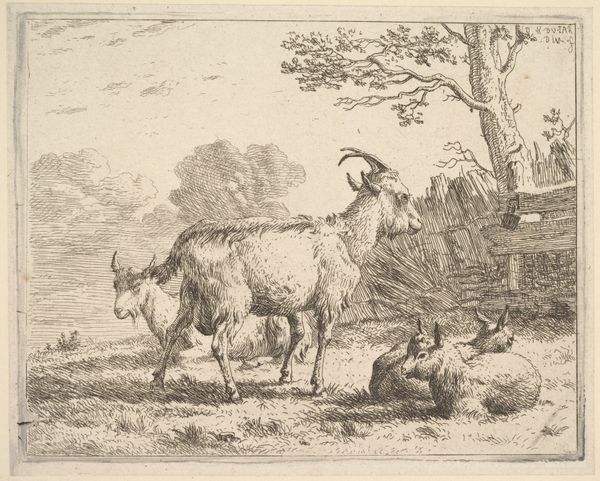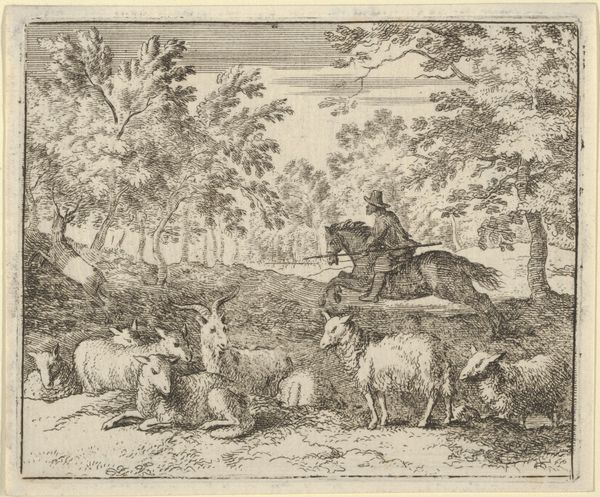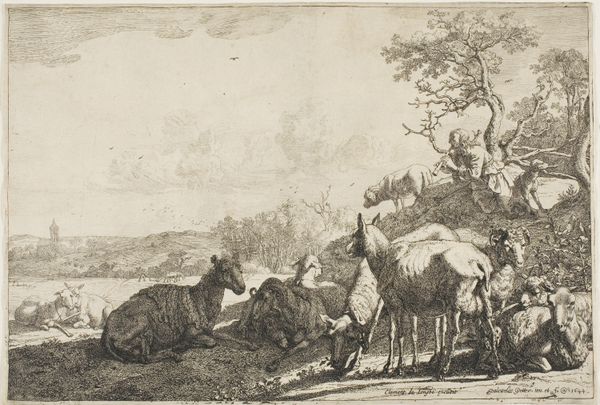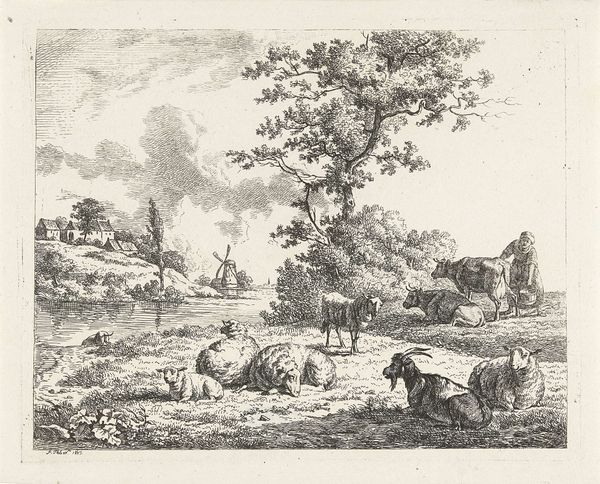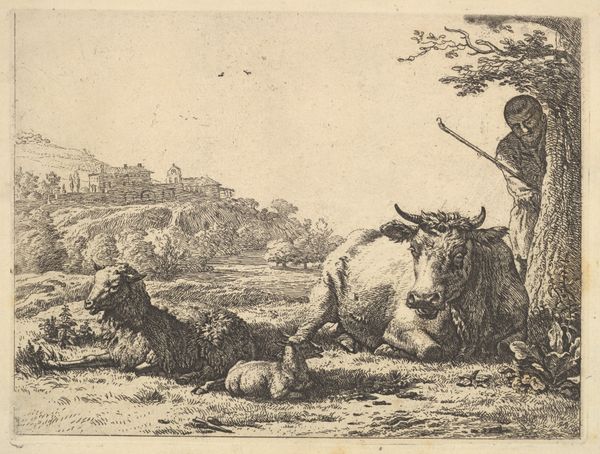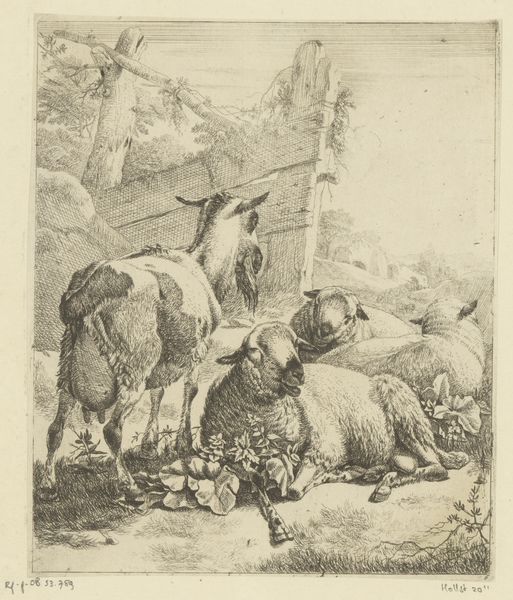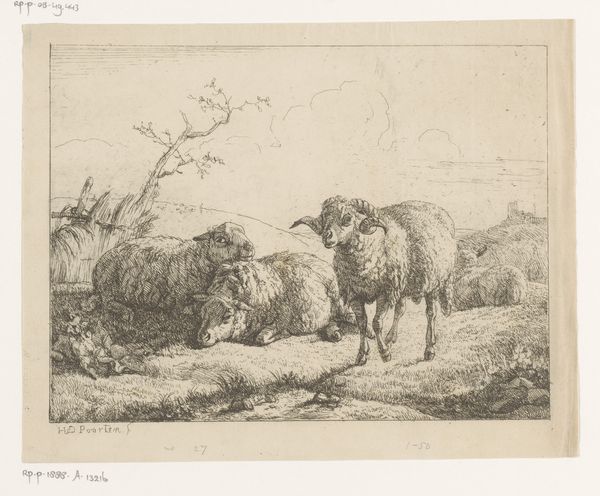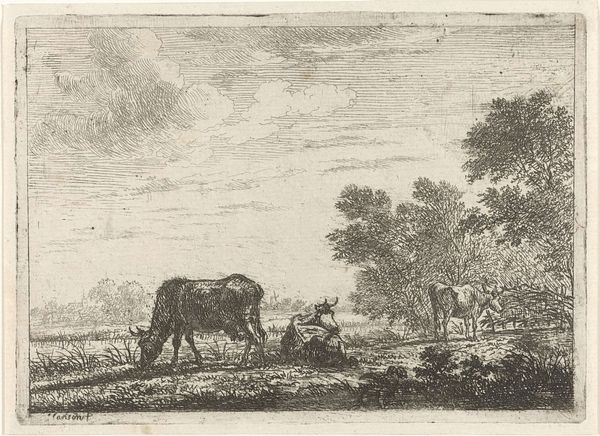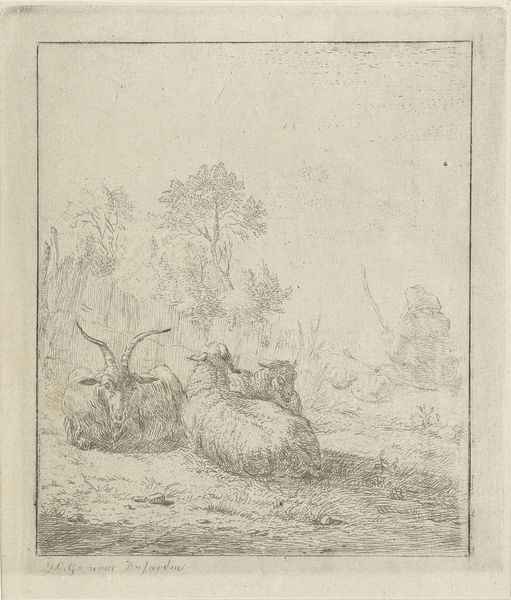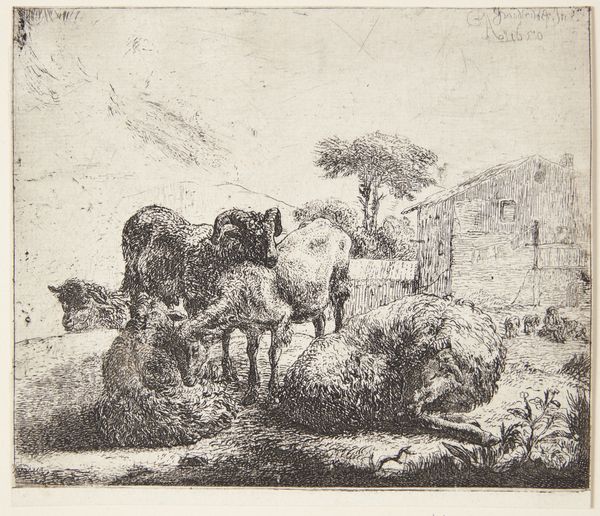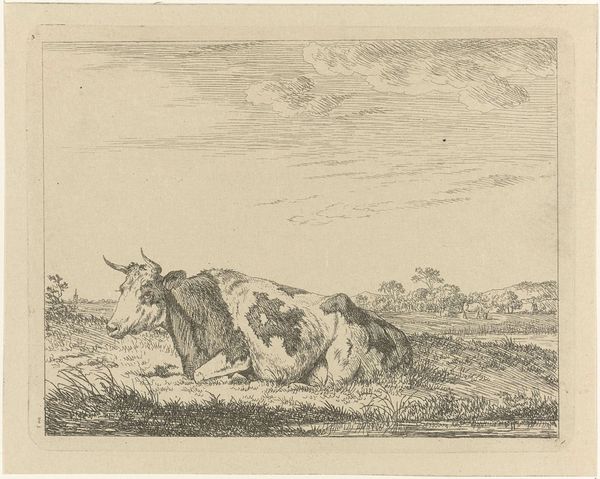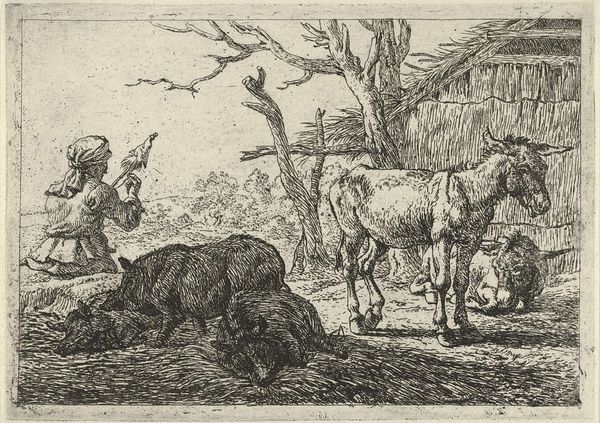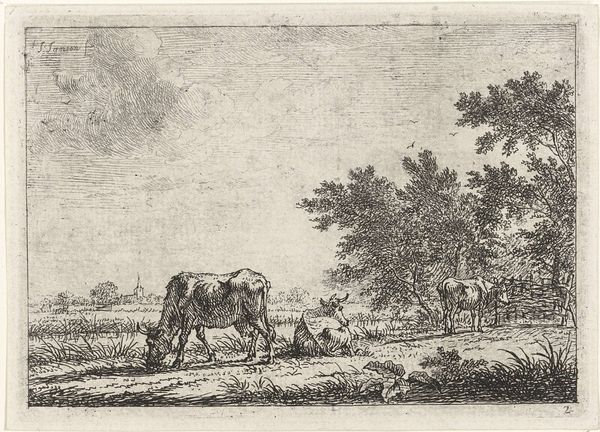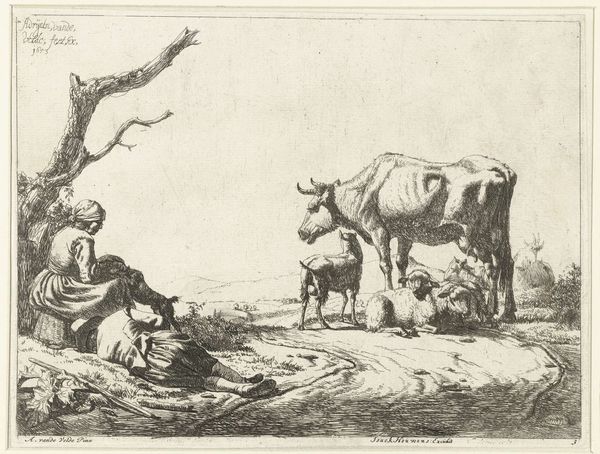
etching
dutch-golden-age
etching
landscape
etching
figuration
genre-painting
realism
Dimensions: height 149 mm, width 138 mm
Copyright: Rijks Museum: Open Domain
Editor: So, here we have Karel du Jardin's etching, "Goat and Two Sheep," from 1652. There's a certain tranquility to it, almost melancholic. It feels so immediate, as if we’re eavesdropping on a quiet afternoon. What stands out to you about this piece? Curator: Immediate, yes, that's lovely. For me, it’s the everyday, isn't it? Du Jardin takes this simple pastoral scene – animals lounging, a shepherd in repose – and elevates it. It whispers of a golden age nostalgia. But look closely at those lines! Notice the cross-hatching, that incredible detail in the animals' wool…doesn’t it remind you of sunlight filtering through leaves? Editor: It does now that you mention it! Is that attention to detail typical of etchings from this period? Curator: Absolutely! Etching allowed for a kind of intimacy you couldn’t get in larger paintings. It was, in a way, the 17th century's Instagram – a way to capture a slice of life and share it, albeit with a more refined technique. Do you see the way the animals are arranged? Editor: They're grouped closely together, almost like a little family huddle. Curator: Exactly! It adds to that feeling of intimate observation. We become complicit in their rest. What did you think when you first looked at this image? Editor: Honestly, I just felt a sense of calm. Like everything was as it should be, for that particular moment. Curator: And isn't that the beauty of it? An artist, long ago, capturing a moment that still resonates with us today. The humbleness of nature perseveres across eras, etched into existence. Editor: I definitely see it in a new way now! Thanks for shedding light on this artwork!
Comments
No comments
Be the first to comment and join the conversation on the ultimate creative platform.
